Abstract
Over the past decade, global agriculture has seen significant shifts in fruit production and trade. Countries like the United States have consistently led in fruit production, with 53 million metric tons (Mt) in 2021 alone. This reflects a trend of increasing yields and technological advancements in farming practices. Importantly, globalization has expanded fruit trade volumes, with countries importing diverse varieties year-round. This growth underscores both the opportunities and challenges in meeting global fruit demands sustainably amid climate change concerns and evolving consumer preferences.
Fruit imports (worldwide)
Over the past six decades, global fruit imports have shown a steady upward trend, reflecting growing consumer demand and international trade dynamics. The record peak of 53 million metric tons (Mt) imported by the United States in 2021 highlights a significant milestone in this trend. This increase is driven by factors such as expanding middle classes in emerging markets, diversifying consumer preferences, and improved logistics and distribution networks. Importantly, globalization has enabled year-round availability of fruits, meeting consumer expectations regardless of seasonality. However, challenges such as climate change impacts on fruit-growing regions, trade policies, and economic fluctuations continue to shape the import landscape. As nations strive to ensure food security and balance trade deficits, the future of global fruit imports will likely be influenced by sustainability efforts, technological innovations in agriculture, and geopolitical developments.
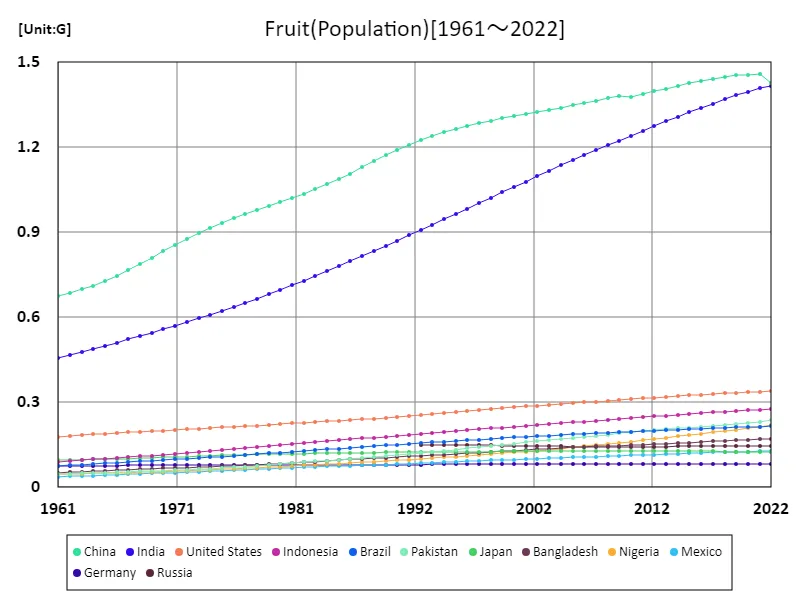

The maximum is 1.46G[2021] of China, and the current value is about 97.8%
Fruit imports (latest year, countries around the world)
In 2021, global agriculture saw substantial fruit imports, with the United States leading at 53 million metric tons (Mt), marking the highest recorded figure. This underscores a broader trend of increasing international fruit trade driven by diverse consumer preferences and year-round demand. The average import volume of 1.02 Mt across various countries highlights the widespread nature of this trend, supporting global food security and satisfying consumer expectations beyond local growing seasons. Importantly, this growth is facilitated by advancements in transportation and storage technologies, ensuring fresh and diverse fruit varieties are available globally. Looking ahead, challenges such as climate change impacts on fruit production regions and evolving trade policies may influence future import dynamics, emphasizing the need for sustainable agricultural practices and resilient supply chains.
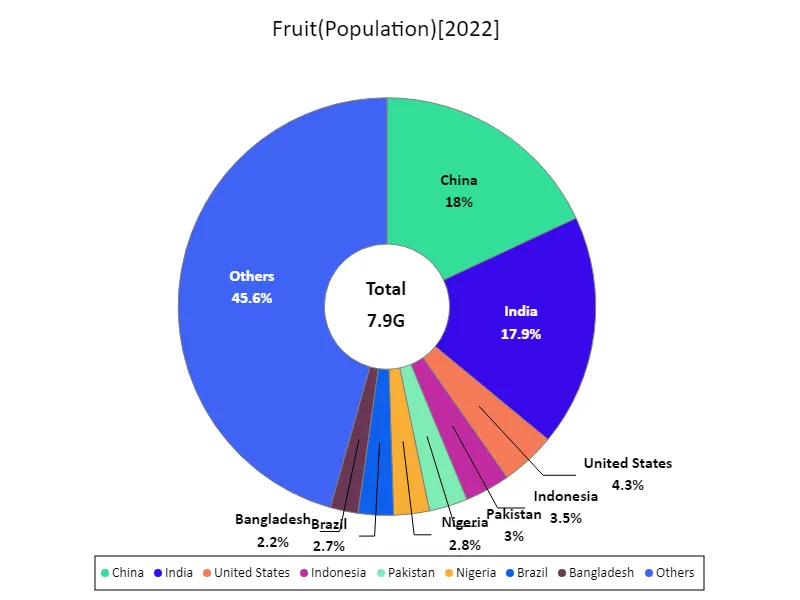

全体の最大はChinaの1.43Gで、平均は41.4M、Totalは7.9G
Fruit imports (continent)
In 2021, global agriculture witnessed a significant volume of agricultural fruit imports, with Europe leading at 79.8 million metric tons (Mt), marking the highest recorded import value. This trend reflects the increasing global demand for diverse fruit varieties year-round, facilitated by improved logistics and distribution networks. Europe’s substantial imports highlight its role as a major market for fruits sourced internationally, catering to consumer preferences and ensuring supply stability despite seasonal variations. The average import volume globally underscores widespread reliance on imported fruits to meet dietary needs and culinary diversity. Moving forward, challenges such as climate change impacts on fruit-growing regions and trade dynamics will likely shape future import trends, emphasizing the importance of sustainable practices and resilient supply chains in global agriculture.
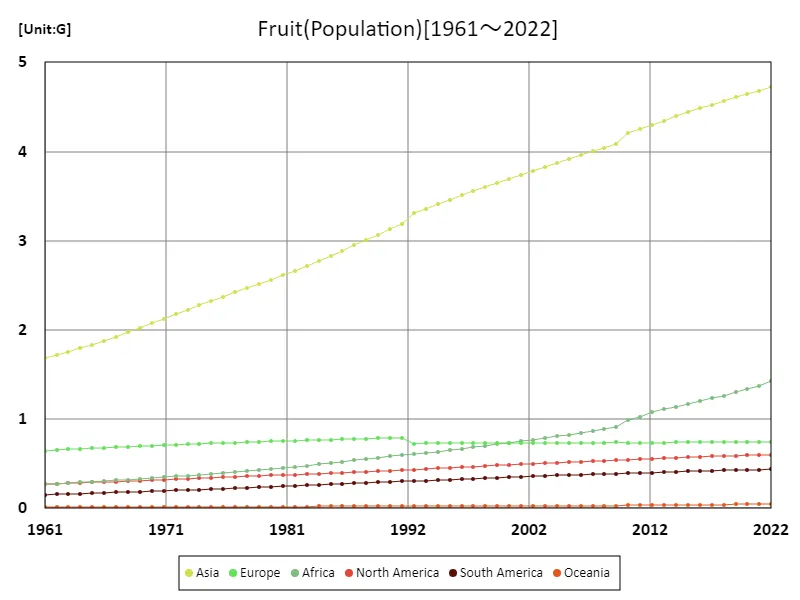

The maximum is the latest one, 4.72G of Asia
Fruit imports (latest year, continent)
In 2021, global agriculture experienced robust agricultural fruit imports, with Europe leading at 79.8 million metric tons (Mt), the highest recorded import volume. This underscores a growing trend of international trade in fruits, driven by increasing consumer demand for diverse and exotic varieties year-round. The average import volume of 31.2 Mt across various regions indicates widespread reliance on imported fruits to supplement domestic production and meet consumer preferences. This trend is supported by advancements in transportation and storage technologies, enabling efficient global supply chains. Importantly, these imports contribute significantly to global food security by ensuring consistent availability of fruits regardless of local growing seasons. Looking ahead, challenges such as climate change impacts on fruit-growing regions and geopolitical shifts may influence import dynamics, emphasizing the need for sustainable agriculture practices and adaptive trade policies to maintain supply stability and meet evolving consumer expectations globally.
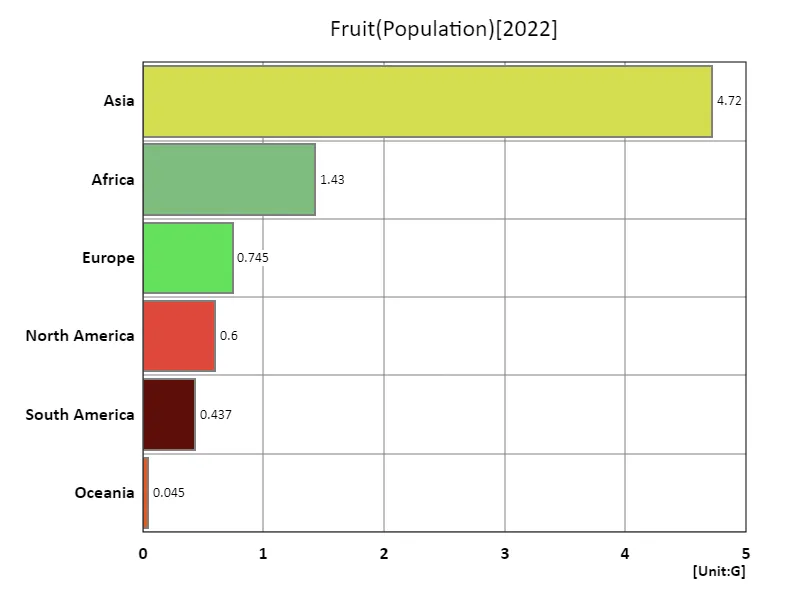

The maximum is 4.72G of Asia, the average is 1.33G, and the total is 7.98G
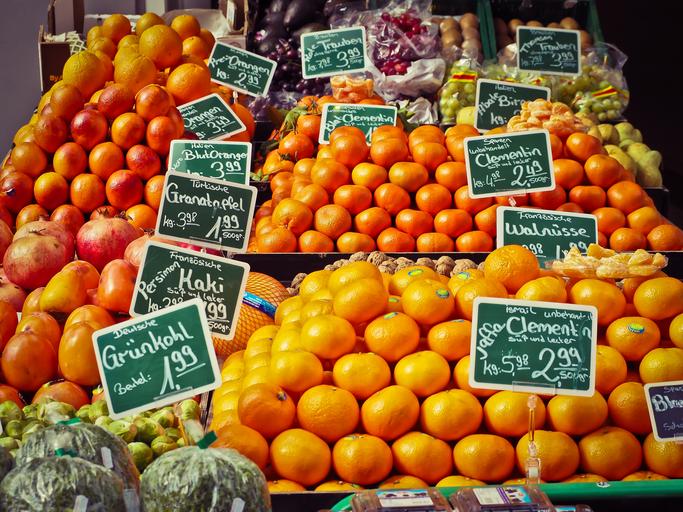


Comments